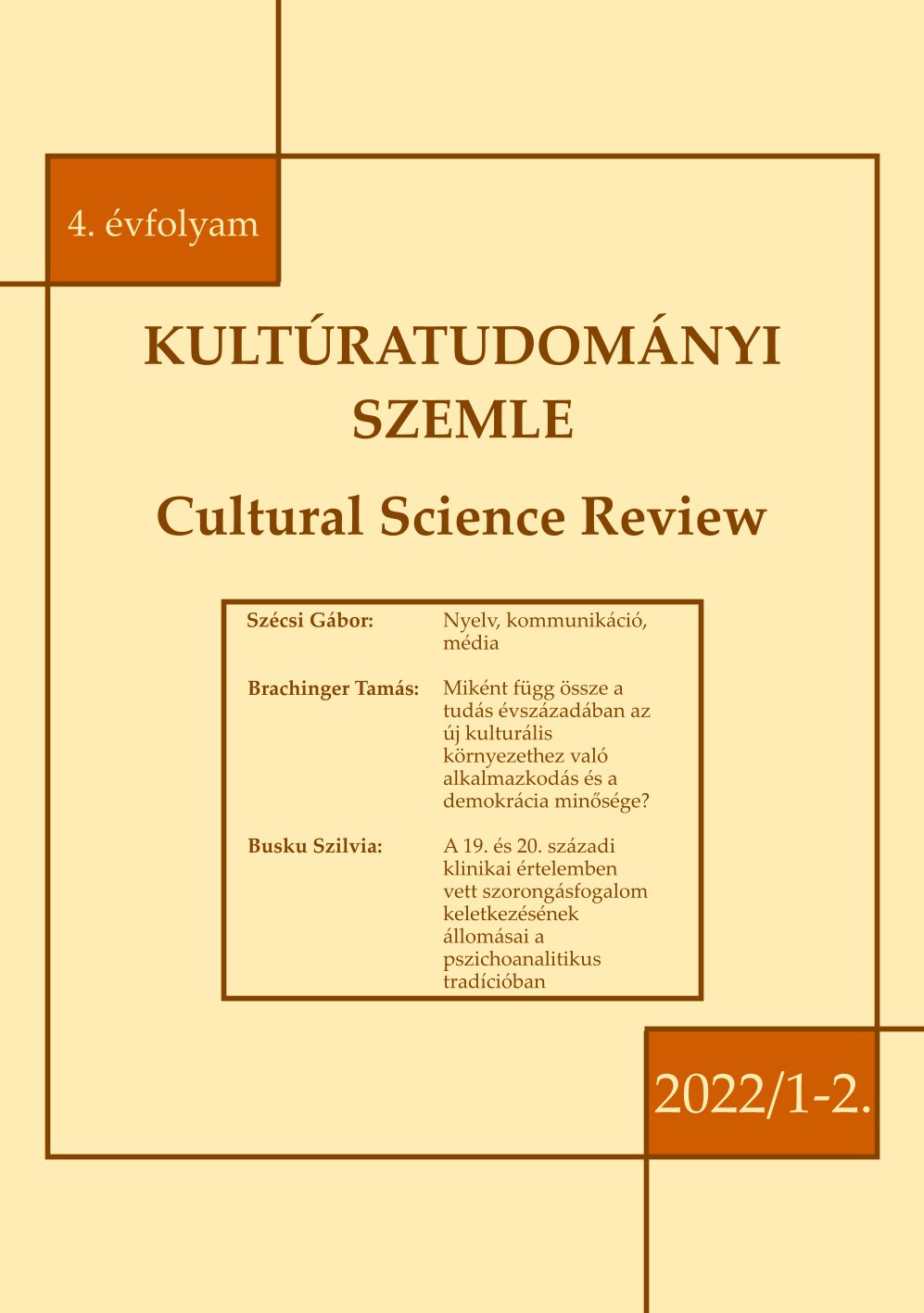Nyelv, kommunikáció, média
DOI:
https://doi.org/10.15170/KSZ.2022.04.01-02.01Absztrakt
Language, Communication, Media
Gábor Szécsi
The article argues that the expansion of new communication technologies leads to a globally perceptible semantic development. The essence of this is that in the environment of new media, orality and multimediality, which are gaining an increasing role in communication, lead to the image of language in the sense of meaning, and to the development of new language usage habits that determine both the process of thinking and the structure of consciousness.
These language usage habits significantly contribute to the rapid changes in community roles associated with multi-channel communication, the convergence of different community languages and communication situations, the blurring of community boundaries, i.e. the mediatization of communities. What's more, the birth of the new concept of community and the creation of
new community forms is also the source of the language that is transforming in the medium of new media, whose figurative nature leaves deep traces in the structure of the consciousness of the communicating person, in his image of himself and the community relations that determine his communicative actions. As I try to highlight in this essay, all of this presupposes the development of hitherto unknown patterns of linguistic creativity. Using language games, abbreviations, humor, picture-word combinations, which are becoming more and more common tools with the use of new communication technologies, everyday language users communicate with each other as creative designers of language meaning. Linguistic creativity becomes a
community-forming phenomenon of everyday language use.

